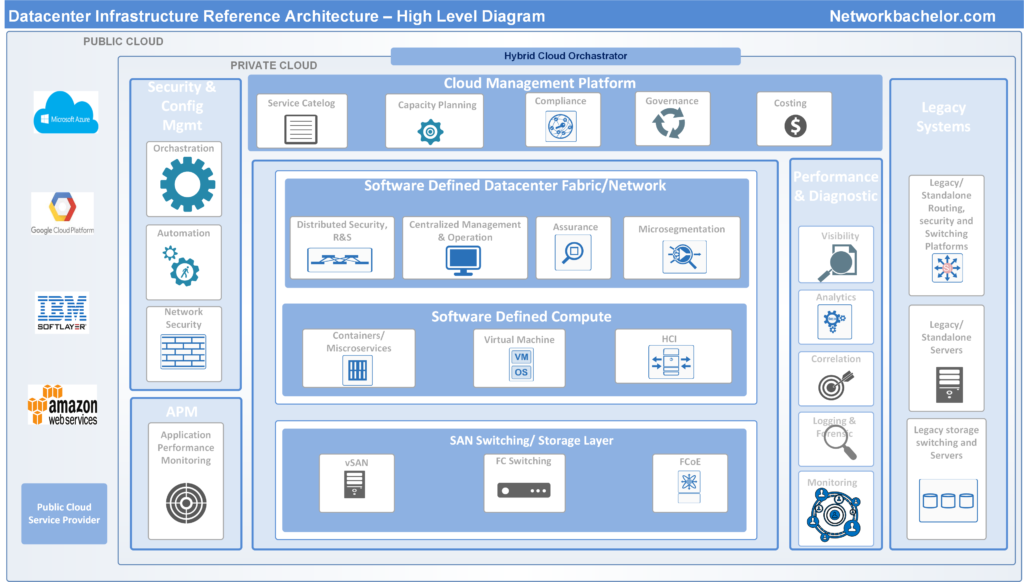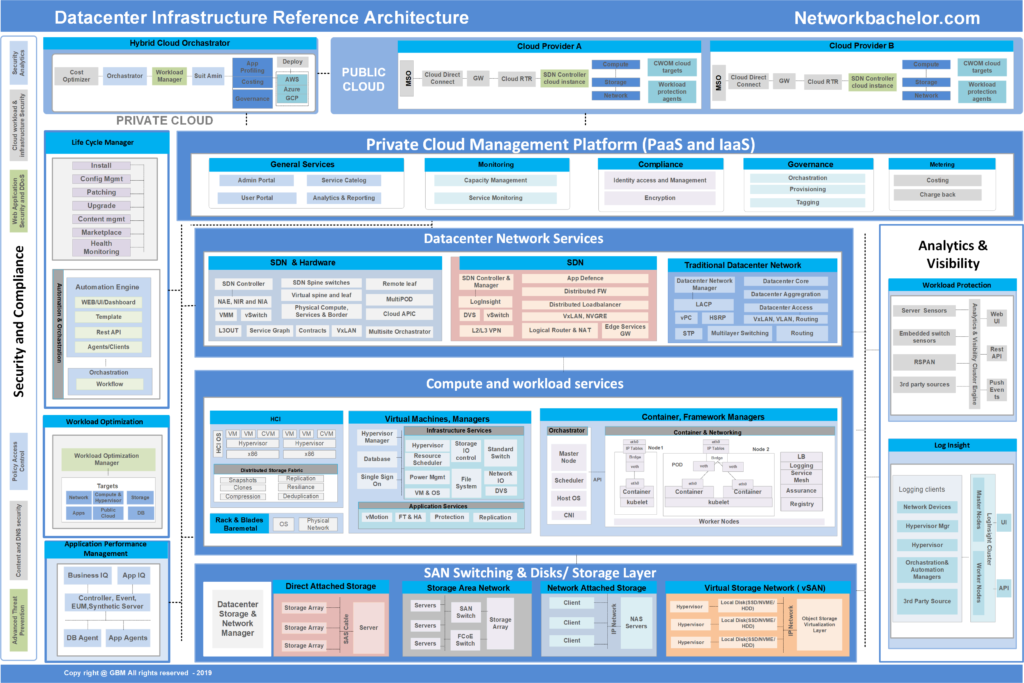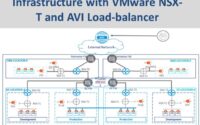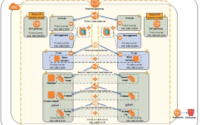Modern Datacenter Reference Architecture Framework
The digital transformation momentum really reshaping the way the IT infrastructure is built and operated for all the good reasons. Traditionally, there were three main pillars to consider when you build your infrastructure, which is Network, compute, and storage. With the agility and fast IT requirements challenges enforced by public cloud vendors, the organizations are asked to develop a modern datacenter reference architecture framework which could enable developing a holistic approach to the overall DC digital transformation journey
Implementing a data center architecture capability requires careful planning. This modeled framework can help you familiarize yourself with key decision points that will facilitate the creation of your own datacenter reference framework. Below section details each of the main blocks which are part of this architecture diagram
Storage switching and disk layer
Storage is a heavy asset in the data center. As compute and networking exhibit greater agility and portability, further increasing storage performance expectations. When it comes to the enterprise infrastructure environment, the storage solutions offerings usually comprise of three types. DAS (direct-attached storage)/ Local storage/Internal storage) 2)NAS (Network-attached storage) and 3) SAN (Storage area network). Also to note that, with the advent of HCI (hyper-converged solutions) such as Nutanix Acropolis or VMware VSAN the traditional storage provider business such as EMC or NetApp , etc are shrinking

Compute and workload services
This is where much of the innovation happens and it is the core blocks that really host the business applications. Also interestingly this block combines the bare-metal and hypervisor-based solutions. The representative vendors in this market come from different starting points, and they range from hardware vendors to hyper-scale providers. In this space, the key hardware/bare-metal providers are Cisco with its UCS &Hyperflex, Nutanix with their HCI solutions, HP and Dell. And for the hypervisors vendors, it includes majorly Redhat KVM, VMware and Microsoft HyperV, etc
Continuous integration/continuous delivery (CI/CD), DevOps, microservices, and cloud-native architecture took containers into the spotlight. Also to note, virtualization provides the technical underpinning for containers. which are available on a variety of common server operating systems (most notably, Linux) and in the public cloud. the micro-services required infrastructure include containers and its management system such as Kubernetes are also part of this layer and are the key enablers for agile IT and digital transformation.
Datacenter network services
The traditional standalone switches and router and modern software-defined networking (SDN) are part of this layer. The network being the transport, the responsibility lays with the network team is huge. As they are in charge of bringing data from source to its destination with maximum efficiency and speed required. The key vendors in this space are Cisco, Arista, VMware, and cumulus, etc. New offerings such as Cisco
ACI, Arista Cloud Vision, VMware NSX provides centralized networking,
security, and analytics services
Private cloud management platforms
The private cloud management platforms are all about managing and orchestrating the end to end infrastructure. This is to provide the required agility and speed for the provisioning/deployment of the application. There are two main solutions to consider in this space. One is the IaaS solution .g.: Open stack, VMware vCloud Director, Cisco UCS director, and 2) is the PaaS solution e.g.: Open shift, VMware Tanzu.
IaaS and PaaS when it comes to the on-prem could be standardized. Highly automated offerings in which compute resources, complemented by storage and networking capabilities, are owned and hosted by an internal IT team. And offered to the application or customers on demand. The resources are multitenant, metered, and operate in near-real-time. Self-service interfaces are exposed directly to the application team, such as a web-based graphical user interface and API
Even if the private cloud is the best option, enterprises have often failed to fully leverage their existing vendors. For example, some organizations with a deep investment in vendor technology such as Cisco, VMware find it easier to just extend that commitment with that vendor’s private cloud offerings. In some cases, these might be better offerings than OpenStack. It is often a complicated deployment, and OpenStack challenges, such as networking and monitoring, are better addressed by these offerings. There is also a trend of public cloud coming to on-premises. Azure Stack, AWS outpost, and Google anthos are examples of such solutions. These clearly show paths to alternative implementations on-premises that can meet objectives without the heavy lift or maintenance of OpenStack.
Public & hybrid cloud services
Cloud-first and edge strategies are driving demand for hybrid environments. Planning and implementing software-defined technologies in support of these new hybrid environments is a challenge many IT professionals face today. You cannot avoid the public cloud in current times. As most of your application tier could be hosted or spread across the private and public clouds. The AWS, Azure, GCP, and Oracle clouds are the primary ones to watch out for. Interestingly when you have the hybrid set up the management and security aspect should be designed in a way it should allow for you to have the required security and network policy stretched across. And also provide you the single-pane management capability
Security, analytics, visibility and optimization
The security, analytics, visibility, and optimization should be applicable across the infrastructure. Hence it is a vertical layer focused on increasing alignment between different infrastructure and operations teams. This could only happen through the system co-ordination, visualization, analytics, and optimization of various heterogeneous systems/teams which could result in a better decision-making process. The core blocks covered including network, compute and storage all these tiers require to have these elements.

Summary and next steps
Organizations that want to implement world-class private cloud architecture for their on-prem datacenter generally begin by doing the foundation of a pilot run of a certain application. And run the show with a hybrid model where they will have traditional/semi-modern/modern systems co-exist with the software-defined infrastructure services. This ensures the resiliency and flexibility to make use of the end to end platform as the requirement arises. For more reading on the related topic– please visit the section titled “Datacenter Networking and Security”



Good